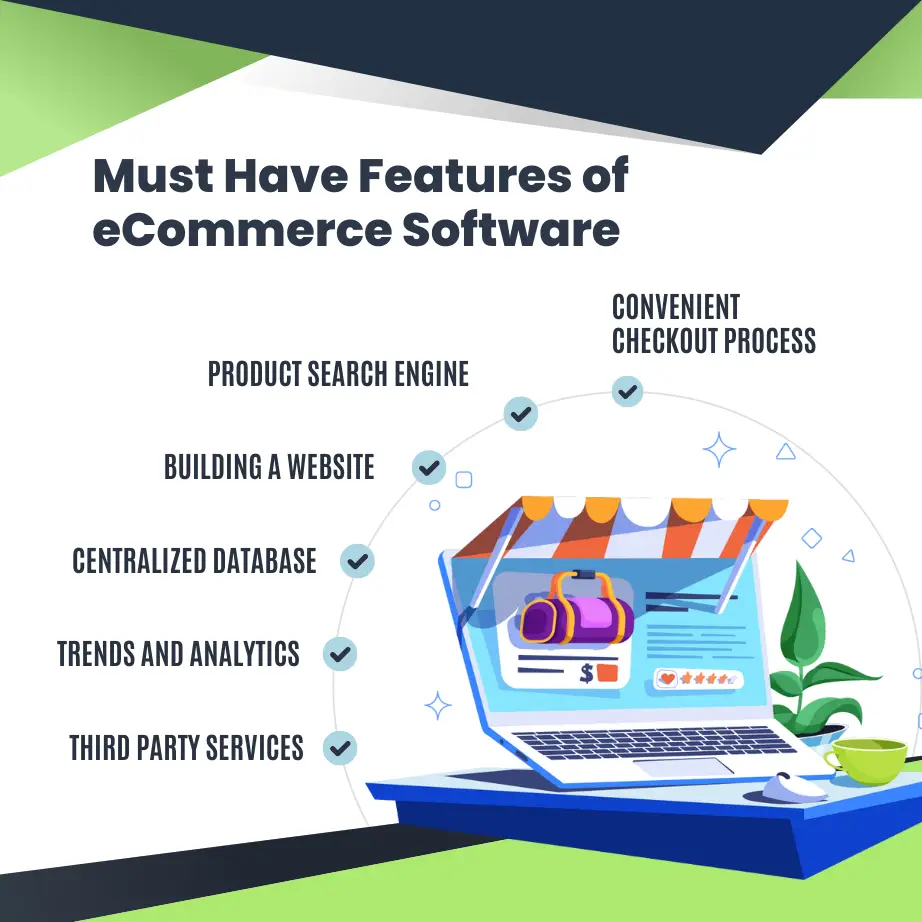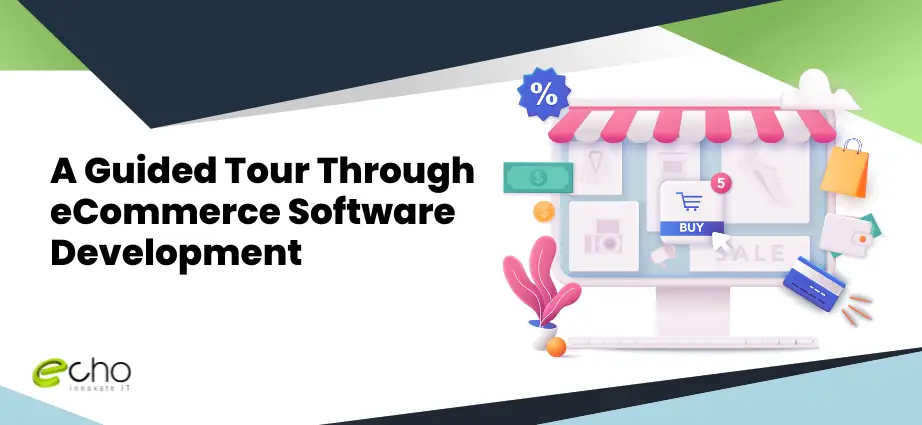2025 Guide to eCommerce Software Development: Mobile-First, SEO-Ready, and Built for Growth
In 2025, eCommerce software development is no longer just about launching an online store—it’s about delivering fast, personalized, and mobile-optimized experiences that drive conversions. With U.S. consumers shopping primarily on smartphones, investing in advanced Android apps, iOS apps, and Progressive Web Apps (PWAs) has become essential. Whether you’re targeting B2B wholesale clients or direct-to-consumer retail, your eCommerce software must integrate cutting-edge technologies like AI-powered recommendations, AR product previews, and headless architecture to stay competitive.
What Is eCommerce Software Development in 2025?
eCommerce software development involves building online shopping platforms that support product listings, shopping cart functionality, secure payment gateways, inventory management, and user accounts. In 2025, this process is mobile-first, meaning the experience is optimized for iOS and Android mobile apps, as well as responsive PWAs that function like native apps. The goal is to create seamless omnichannel experiences that cater to both U.S. and global shoppers.
The Rise of Mobile Apps in eCommerce
Mobile commerce (mCommerce) dominates online sales in the United States. Consumers demand convenience, and mobile apps offer features that desktop websites cannot match—such as push notifications, biometric login, and in-app messaging. Leading retailers like Amazon and Walmart have already set the standard with high-performing Android and iOS apps that include one-click checkout, real-time tracking, and AI-powered product discovery.
Key Technology Trends in eCommerce Development
1. AI & Personalization
Modern eCommerce apps leverage artificial intelligence to deliver dynamic product recommendations, predict buyer behavior, and automate customer service through chatbots.
2. AR Shopping Experiences
Using ARKit (iOS) or ARCore (Android), brands now let users preview furniture, clothes, or cosmetics in their space—boosting conversion and reducing returns.
3. Headless Commerce
By decoupling the frontend from the backend, developers can build fast, flexible storefronts across mobile apps, PWAs, smart devices, and marketplaces—powered by platforms like Shopify Plus, BigCommerce, and Magento.
4. Voice Commerce & Smart Search
Integrating voice assistants and predictive search into mobile apps improves accessibility and speeds up product discovery, especially on smartphones.
5. Cloud & API-Driven Architecture
Scalable APIs, microservices, and cloud infrastructure (like AWS or Firebase) ensure fast performance and real-time syncing across platforms.
Step-by-Step eCommerce Software Development Process
1. Market Research & Planning
Analyze target audiences, U.S. shopping behavior, and high-volume keywords like “eCommerce mobile app,” “iOS shopping app USA,” or “Android B2B retail platform.”
2. Choose the Right Business Model
Identify whether your app will serve B2C, B2B, C2C, subscription commerce, or a hybrid model. This determines your software architecture and feature list.
3. UI/UX Design for Mobile
Design a mobile-first interface with intuitive navigation, fast loading, high-contrast visuals, and mobile-optimized product filters.
4. Choose Your Tech Stack
Frontend: React Native, Flutter, or Swift (iOS) / Kotlin (Android)
Backend: Node.js, Laravel, or Django
Database: Firebase, MongoDB, or MySQL
Payments: Stripe, PayPal, Apple Pay, Google Pay
Security: SSL, tokenization, GDPR/CCPA compliance
5. Build MVP (Minimum Viable Product)
Focus on core features: catalog browsing, product search, checkout, account login, and basic push notifications.
6. Test Across Platforms
Run functional, security, performance, and device compatibility tests across Android/iOS devices and browsers for your PWA.
7. Launch & Post-Deployment Support
Release on Google Play and the Apple App Store with keyword-optimized titles and descriptions. Monitor user feedback, fix bugs quickly, and iterate continuously.
Cost to Develop eCommerce Software in 2025 (USA Estimates)
| Project Scope | Estimated Cost (USD) |
|---|---|
| Basic App (MVP) | $30,000–$60,000 |
| Mid-Level App | $60,000–$120,000 |
| Enterprise Solution | $150,000–$300,000+ |
Costs vary depending on complexity, mobile platforms (Android/iOS), custom features (AI, AR, loyalty programs), and whether development is outsourced or done in-house.
Must-Have Features for Mobile eCommerce Apps
Social login & biometric authentication
Product search with filters & voice input
Cart, wishlist, and one-click checkout
Push notifications for deals & reminders
AI-powered recommendations
Order tracking & customer support chat
Loyalty points and referral integration
In-app reviews and ratings
E-E-A-T Compliance for Google in 2025
To rank well on Google and gain user trust:
Include expert-reviewed product content
Display author bios and business credentials
Use HTTPS and PCI-compliant payment systems
Add structured data (JSON-LD) for products and FAQs
Keep privacy policies, refund terms, and contact info clear
Update content regularly with trustworthy, fact-based information
Looking for a guided tour through eCommerce Software Development?
The United States, being the second-largest eCommerce market in the world is projected to increase by USD 1,415,925.7 million by 2028. With this global eCommerce sales are expected to increase over the next coming years. It is followed by leading industries like Fashion, Electronics, Hobby & Leisure with Furniture, Care Products, and Grocery markets respectively. With this one can agree that eCommerce is a dynamic industry that keeps evolving with trends and current needs of the consumer.
Why eCommerce Market Is Booming Today?
There are various factors that make eCommerce market flourish in 2024. Going through the insights of Statista; it has found revenue generated by the eCommerce market to reach USD 9.62 Billion in 2028 with an annual growth rate of 4.26%. Reasons why eCommerce is growing currently are mentioned below:
Personalized Shopping Experience
Shopping was never so personalized and in favor of buyers as they are today. With our choices and shopping needs being tracked, our shopping experience have become customized as per our needs. This helps eCommerce businesses directly reach their target audience ensuring less wastage of time and higher investments.
Use of Smartphones
The greater use of smartphones has benefitted eCommerce majorly. They act as a source or a medium for online shopping markets providing rich shopping experiences to shopaholics globally. A phone gives universal access to everything on the internet, leading to further eCommerce market growth.
Also Check:
Various Brands For Various Needs
Another key factor is a wider range of product availability. Retail markets or malls are always limited to some extent providing limited brands and products for buyers. Shopping online gives you access to any store of your choice, with marketplaces offering access to numerous brands and options.
Simple & Convenient Shopping
eCommerce has made the buying and selling experience simple and convenient. Customers can discover the proper size and color for their needs without having to go through aisles of apparel and be disappointed. It can then be shipped directly to their door without them ever having to visit a physical store.
This type of shopping can be done during a work break at your desk or somewhere else. And, as individuals place a higher value on time and convenience, it is becoming increasingly clear that consumers do not need to visit the mall.
Social Media Integration
Social media has now been interwoven into eCommerce through platforms such as Facebook Marketplace, Instagram Shop, TikTok product tagging, and many others. Because social media is so powerful and consumers spend a lot of time on it, expanding your store to include these platforms is incredibly beneficial.
Now let me take you on a guided tour of eCommerce Software Development…
What Is eCommerce Software Development?
eCommerce software is a standalone program or software suite that allows you to sell items and services online. It helps you to streamline all of your processes, from inventory to sales, through the backend while making it simple for customers to buy from the front end, which is your website.
eCommerce software is available in a variety of configurations, each designed to meet your specific requirements and budget. The size of your organization usually determines the sort of e-commerce website software you choose, although this is only sometimes the case. You can utilize Software-as-a-Service or Platform-as-a-Service for your e-commerce, or you can use an on-premise platform that gives you control over the software and server that delivers your e-commerce website.
So in simple words, eCommerce Software Development is a process of creating applications that enable stores to manage their business. It also involves continuous integration of e-commerce market trends like AR technology, Blockchain, mobile-friendly interfaces, strong security measures, and wider payment gateways.
Step-by-Step Guide To eCommerce Software Development
Decide Your Market Product For eCommerce Software
First and foremost, you should focus your application on one specific issue. From the end user to the vertical, this decision will set the tone for everything that will be added to your solution in the future. eCommerce differs by industry. Your application can target several areas of market relations, including retail, internet marketing, and digital advertising.
eCommerce solutions can be classified according to the following criteria:
Business-to-business (B2B): refers to digital transactions between businesses.
Business-to-Consumer (B2C): A company sells products to individuals.
Consumer-to-Consumer (C2C): transactions are solely conducted between consumers.
Consumer-to-Business (C2B): individuals create value and share it with businesses.
Also Read:
Create Your eCommerce Business Model
First and foremost, you should focus your application on one specific issue. From the end user to the vertical, this decision will set the tone for everything that will be added to your solution in the future. eCommerce differs by industry. Your application can target several areas of market relations, including retail, internet marketing, and digital advertising.
eCommerce solutions can be classified according to the following criteria:
Business-to-business (B2B): refers to digital transactions between businesses.
Business-to-Consumer (B2C): A company sells products to individuals.
Consumer-to-Consumer (C2C): transactions are solely conducted between consumers.
Consumer-to-Business (C2B): individuals create value and share it with businesses.
Add On Features For eCommerce Software Development

- Convenient Checkout Process: It automates the checkout process, determining the amount clients must pay after accounting for pricing, taxes, handling charges, and shipping.
- Product Search Engine: Search features with several filters help online buyers find the things they want to buy.
- Building A Website: You can create a website from scratch utilizing prebuilt templates and online shopping software.
- Centralized Database: A centralized database allows eCommerce software to conveniently store, retrieve, and access product and customer information.
- Trends And Analytics: Analytics and reporting can help you identify trends and patterns to improve your offerings.
- Third-Party Services: eCommerce requires third-party integration to handle responsibilities like accounting, payments, and order fulfillment, among others.
Also Read:
Create A Team Of Developers For Your eCommerce Project
To create a comprehensive e-commerce solution that people will enjoy, you must ensure that it is dependable, secure, and bug-free. You can only ensure this by choosing software developers who have extensive experience in e-commerce development.
By partnering with a software development company, like Echoinnovate IT, you gain access to professional developers and project managers who have been vetted by the company and whose work is insured by the platform.
You need the following professionals on your e-commerce development team:
- UI/UX designers
- Front-end developers
- Back-end developers
- App Testers
- DevOps developers
- Business Analysts
- Project leaders
Make An MVP For Your eCommerce Business
A minimum viable product only includes basic functionalities. These should be sufficient for users to evaluate your mobile solution. Nowadays, most developers embrace the agile product development technique. This is because agile approaches allow developers to start software development with a minimal product that has only the most critical functionality. It is known as a minimum viable product.
Agile approaches, such as scrum development, enable developers to produce a product iteratively. In scrum terms, an iteration is equivalent to a sprint. Each sprint refines the software product by adding new features and upgrading existing ones in response to user requests.
Required Technology Stack For eCommerce Software Development
Here are the following tech stacks you require for developing reliable eCommerce Software for your business:
| Category | Teck Stack |
|---|---|
| Programming Languages | PHP, Ruby, Node.js (web) Swift, Objective-C, Java, Kotlin (Android & iOS) |
| Web Styles | HTML & CSS |
| Database | MySQL, MongoDB |
| Client Side Interactivity | JavaScript |
| Testing tools | A/B Testing, Espresso, Form Analytics |
Deploy & Launch Your eCommerce Application
After quality assurance, you launch your e-commerce site to end users. Configure the deployment server and database solution, then deploy the application code. Also, use a CDN (content delivery network) to serve assets such as graphics and stylesheets from edge servers, reducing application load times.
Analyze your application’s performance, such as user traffic, user experience, and security. Collect customer feedback on your e-commerce software through in-app surveys, etc. Improve and enhance your application with post-deployment monitoring and feedback.
eCommerce Software Development: Total Cost
There is no specific cost for the entire process of eCommerce Software Development. Although you can expect to spend between USD 64,000 to USD 260,000 approximately. Yet it solely depends on the company you are hiring, their total developmental cost, time, and location, which may affect your overall cost.
Factors Affecting eCommerce Development Costs
Software type: eCommerce site development, mobile app development, and MVP development all come with varying costs.
Complexity of Project: Pricing for eCommerce software development will rise as features, third-party integration, and customizations increase.
Location: The location of your development team is also a deciding element with a big impact. Developer rates vary by region around the world. As a result, you can save money by hiring a development team from a region with inexpensive developer rates.
Conclusion
The eCommerce market is growing day by day become an ideal spot for business enthusiasts to invest and take advantage of this lucrative industry. Make sure to read the entire developmental process if you are thinking to finance on eCommerce Software Development. Also, make sure to choose the right company for your project to achieve the best in the market. We hope this article was insightful and provided you well-guided tour through eCommerce Software Development.
Also Read:
Why Echoinnovate IT For eCommerce Software Development
If you are looking for a flawless eCommerce solution that aligns with your current market trends and business needs, you are at the right place. Choosing the right app development company is essential for the success of your app. Echoinnovate IT is an eCommerce App Development Company based in the United States. Bring your ideas to us and get a deep understanding of eCommerce Software Development from basic. Get tailored solutions that suit best for your business and receive cutting-edge solutions from our top experts.
Contact Us Today!
Also Read:
FAQs- eCommerce Software Development
Why is eCommerce software development important?
It enables businesses to establish and manage their online presence, reach a wider audience, automate sales processes, and provide a seamless shopping experience for customers.
What are the key features of eCommerce software?
Key features include product management, inventory tracking, secure payment processing, order management, customer relationship management (CRM), and integration with other business systems.
What technologies are commonly used in eCommerce software development?
Common technologies include programming languages like JavaScript, Python, and Ruby, frameworks like React, Angular, and Django, and databases like MySQL and MongoDB. Additionally, platforms like Shopify, WooCommerce, and Magento are widely used.
How long does it take to develop an eCommerce website?
The development timeline varies based on factors such as project complexity, desired features, and team size. A simple eCommerce website can take a few weeks to develop, while more complex platforms may take several months.
What is eCommerce software development?
It refers to the process of building online store platforms that manage product listings, carts, payments, and customer data—often including mobile apps.
Why are mobile apps important for eCommerce in the U.S.?
They offer faster performance, better UX, and higher engagement than mobile websites—boosting sales, retention, and push marketing.
Should I build for Android, iOS, or both?
Both platforms dominate in the U.S. Android has a larger user base, but iOS users tend to spend more per purchase. Cross-platform frameworks like Flutter can support both efficiently.
What’s the difference between a PWA and a native app?
PWAs work in mobile browsers and don’t need to be downloaded, while native apps (Android/iOS) are installed from app stores and offer more performance and offline capabilities.
How much does it cost to build a mobile eCommerce app in 2025?
Anywhere from $30,000 for a basic app to $300,000+ for a full-scale platform with advanced features.
How does AI improve eCommerce apps?
It delivers personalized product suggestions, predicts demand, automates chat support, and enhances search accuracy.
x



